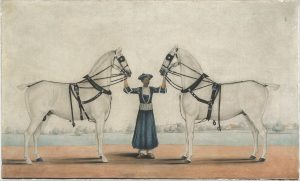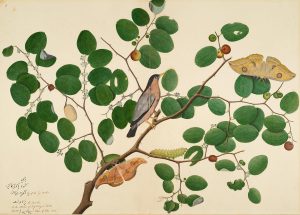Iftikar Ahmed
Historian William Dalrymple gave a talk at DAG in New Delhi about the previously ignored and often dismissively called “company paintings” by late Mughal artists. These paintings were created for the East India Company’s pleasure and profit, and many of them have never been studied critically. He Highlighted the colonial attitude towards Mughal art and artists, noting that they were often viewed as inferior and backward by British officials.
Artists such as Dip Chand, Yellapah, Bhawani Das, Rangiah, Shaikh Muhammad Amir, Sheikh Zain-ud-din, Vishnupersaud, Ghulam Ali Khan, and Sita Ram created paintings during the critical years between 1790 and 1840, but they did not attract nationalist attention in independent India, even though they constitute an important school of art by themselves.

Courtesy: wiki
He cited a letter from British administrator Sir Charles Metcalfe, who wrote in 1809 that Mughal art was “wholly devoid of any principle of selection, or of any degree of taste or feeling for beauty.” Despite this dismissive attitude, Dalrymple argued that the East India Company’s patronage of Mughal artists had a significant impact on the development of Indian art. These artists were able to adapt their traditional styles to meet the demands of European patrons, creating a unique fusion of Indian and European artistic traditions.
Dalrymple explained how colonialism worked through and with Mughal artists. The East India Company commissioned paintings that combined Mughal miniature style with Enlightenment-era natural history portraitures. Widespread botanical, geological, and archaeological surveys were commissioned in the colonies as part of European scientific enquiry and aggressive cataloguing, which brought out an “uneasy and wonderful” set of hybrid paintings. The Mughal artists painted detailed illustrations of local species of plants, birds, and animals along with side displays of scientific cross-sections. Some of these paintings were also the earliest portraits of ordinary Indians.
The commercial nature of the paintings commissioned by the East India Company is also significant, as it highlights the close relationship between colonialism and commerce. The paintings were not only used to document local flora and fauna but also to explore the economic potential of India’s natural resources. The talk shed light on a fascinating and often overlooked aspect of India’s colonial past, highlighting the role of Mughal artists in shaping the artistic and economic landscape of the country.

Courtesy: Wikimedia Commons
In 2019, the works of these artists finally got public and scholarly attention in a show in London, and in May 2022, the National Museum in New Delhi also curated an exhibition called “Company Painting: Visual Memoirs of Nineteenth-Century India.” However, Dalrymple was acutely aware of the day-to-day political developments and joked about showing paintings from the early 1800s of Mughal constructions in Agra, including the Salim Chishti dargah, saying, “These were the buildings built by the dynasty that no longer exists. They are a figment of our imagination. The dynasty that never happened.”
Dalrymple also touched upon the controversy surrounding the renaming of cities and monuments in India, particularly those with Mughal names. He argued that the renaming of cities and monuments is a way for the current Indian government to distance itself from the Mughal period and assert a Hindu nationalist identity.
He pointed out that this nationalist agenda is not new and has been seen throughout history, including during the British colonial period when the British sought to erase the Mughal legacy in India and impose their own identity.
The British made a conscious attempt to move the imperial capital from Delhi to Calcutta, which was a completely invented city. Overall, Dalrymple’s talk shed light on a fascinating but overlooked aspect of Indian art history and also highlighted the intersection of art and commerce during the colonial era. His insights into the political context surrounding the Mughal paintings and the ongoing debates over Indian identity added a thought-provoking dimension to the discussion.





